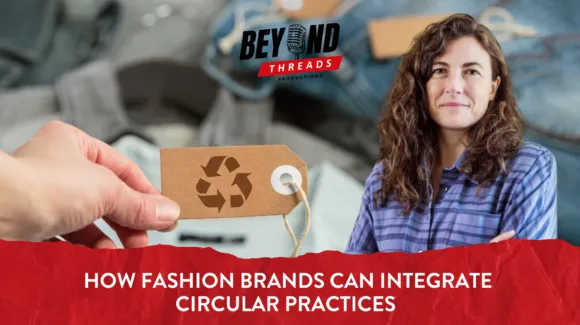If you work in the apparel sector, you might have heard the term Digital ID or Digital Passport be used. You might have been interested in learning more, but when you pick up an article to review it gets complex quickly. While we do have some of these more complex articles, we thought it might be helpful to also write a primer to break it down, we hope this article helps.
Why are we even talking about digital ID in the apparel industry?
Today clothes do not contain much information about themselves on the physical product. Look at the shirt you are wearing, you might have a brand label on it, a size label, and a content tag that says what it is made of. That’s probably it. Therefore, if you want to know what factory it was made it, what it originally cost, or how to recycle it, while that information might be stored somewhere, it isn’t accessible by just holding the item in your hand.
Access to more than the visible information is why Digital ID is of interest to many in the apparel industry. Government agencies, individual people, brands, retailers, and other groups of people require access to information about a product to do their jobs or manage the item and making that information easier through adding a Digital ID to a product is one solution.
What is Digital ID?
It’s like asking what the internet is, it is a term used to describe many things.
At a high level, it is about digitizing apparel items, not only is there a physical product but a way that physical product can be connected digitally.
For instance, you have a physical phone – made of plastic, metals, and glass. Inside that phone are microchips that connect that phone digitally.
In the case of apparel, the thing that does the connection is called a Trigger or Data Carrier. Examples of this trigger include Radiofrequency Identification – (RFID), QR Codes, Bar Codes, specialized print, or ink, and near-field communication (NFC).
To read the information on this Trigger it needs to be scanned. Each of the Triggers has a different scanner required because of how their technology is designed.
For example, if you go to a restaurant nowadays, you scan a QR code that pulls up a website on your phone.
When you go to the grocery store the barcode on your food is scanned and the price is pulled up.
The Data that is tracked
The next key thing to know about is the Data that is being tracked. In our examples above, the data is the menu or the price. When a brand makes a product, they are already tracking a lot of important information that would be helpful in the future. Information like, where the product was made, what materials, dyes, and trims it was made from, the original price, the season and year it was made, photos, or even the description written for the item on a website. This data benefits the brand and customers. But today the only way to access it is if one had access to the brand’s internal systems.
In a circular supply chain, new data can be created and added to a product as well. For instance, if it were resold or repaired. Think of data as anything that happens to a garment.
Tracking data in a database
All this information then needs to be organized in a way that others besides the brand can access. Brands can build and organize this data and make their database available. And there are companies who can do it on behalf of a brand. These companies specialize in connecting the various systems where data is stored.
For instance, my phone at the end of the week will tell me all the apps I was using, for how long in a single report. The information is in various places but can get pulled together in one place to see it.
So far we have learned that physically there is a need to add a Trigger onto a garment, secondly the data of that product is organized in a way that once scanned can be readable and useable to the person who scanned the item.
This is the backbone of Digital ID.
How the industry will use Digital ID
How we use the data and interact with adding new data after a product is sold to a customer is new and exciting. Customers will be able to look up their product and learn more about its history. Customers could even add new data to the database, sharing a story of where and when the item was worn. Repair shops could access repair guides from scanning the Trigger, and then add new data about what was repaired.
Customers and Brands could more easily resell items and direct the product to the correct recycler once it is at the end of its use.
In the European Union, there is a new law requiring a baseline of data from brands, this will also influence what data is collected and tracked.
While so much is possible, the critical factor is that brands need to begin adding the Trigger to their items and mapping out the system for adding data, managing their database, and who and how they want data interacted with over the course of a product’s lifecycle.













